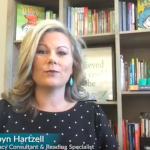Building Trust with Video-based Coaching

Trust is the foundation of any coaching relationship. Without it, not much coaching can occur. Video-based coaching can be stressful for teachers who have never used it before. There are often concerns about being able to navigate the technology, unease with being “on camera”, or worries about how the videos will be used by coaches and administrators. Since I work with a variety of organizations to provide remote coaching, it is imperative that I am able to build trust quickly with people I often have never met other than through video.
Tips for establishing a solid foundation of trust when using remote, video-based coaching:
- Have a framework. Video-based coaching may be new to many educators, and they may not know how to get the most from it. By providing a framework for coaching and learning, it gives a structure that can be adapted once their comfort grows. For me, this framework is what I call a Learning LABS approach (Learning through Action Based Study). We establish the goals of the coaching upfront, and I create Learning LABS in the Workflow feature of TORSH that break the large goal into smaller objectives. For each objective, there is content provided and ways for educators to apply the learning and record it for feedback and self-reflection.
- Be clear about the roles and expectations. The initial introduction to coaching (in any form) is always critical because it is where we establish the boundaries and expectations for each coaching engagement. I like to do this in-person (or at least through real-time video), but sometimes it has to be done in other ways. Regardless of the format, there are a few things that I always share:
- Dates for coaching cycles and uploads or a map of the learning plan.
- Who will see or have access to the videos? This varies by organization and the intent of the coaching.
- Sharing features–Many teachers mistakenly assume that when a video is uploaded, it will automatically be shared with all users. This is only true if they change their settings to make this possible. So, I always make sure to go over the setting features with them to ease those anxieties.
- Provide detailed steps for getting started. While teachers are confronted with new technologies every day, it is sometimes daunting to think of learning to navigate yet another one. I like to provide a detailed step-by-step email that lets them know the following information and steps:
- They will be receiving an email from TORSH Talent to set up a profile within 24-48 hours. If they haven’t received it, check their spam folder.
- Once the email is received, click on the link to set up a profile.
- Once their profile is set up, download the app.
- Do an intro video to practice uploading and sharing
- Once I receive the intro video, they are invited to a workflow and can begin.
- Start with something light. No matter what the overall goal is for coaching, the first video needs to allow a risk-free experience. I like to have teachers give me a tour of their classroom as a way for them to become comfortable with the vulnerability of allowing someone into their space. This also provides me with a glimpse into their personality and style which allows me to connect on a personal level before jumping into the learning.
Trust is not built in a day, but it also doesn’t have to take years. In my experience, I have found that once teachers do their first video, they get much more comfortable with the whole process. That is…if there IS a process. The time taken upfront to build a framework, provide clarity about the process and expectations, and design a risk-free first encounter can accelerate trust exponentially.

Robyn Hartzell has served in education since 1998 and has experience in a variety of roles: teacher, instructional coach, interventionist, trainer, consultant, and program coordinator at the campus and regional levels. Currently, she works as an independent consultant and coach promoting effective instructional and leadership practices and championing the need for quality professional learning. Robyn takes privilege in coaching professionals in their craft and is passionate about helping organizations develop leaders who make a lasting, positive impact on the programs and people they serve.
Be sure to follow Robyn on Twitter @robynhartzellpd and check out her website at www.hartzellpd.com



